Acadia National Park covers about 40% of Mount Desert Island. The park has grown spasmodically over the years as people have donated land or the national park service has bought land to tie outlying donations into the park. Consequently, there are many homes that abut the park, including mine. There are also lots of trails that existed before the land they are on became part of the park. Many of those old trails have been abandoned and allowed to gradually disappear. Some however, persist as unofficial trails maintained solely by foot traffic. These unofficial trails are called social trails. One social trail begins in my yard and crosses a few hundred yards of Acadia National Park to the beach. Today’s post documents my first hike of the season on that trail out to the beach. The hike today was also an excuse to try out the new Nikon D620 camera I bought this morning.
The first 50 yards of the trail started were very wet, so I didn’t take any pictures because I was balancing or stones and roots in a futile attempt to keep my feet dry. Once I passed the soggy bit, I entered a stretch of trail I call the moss garden because the ground is completely covered with moss except for the narrow track of the trail itself.
The moss garden with stepping stones set into the trail
Less than one hundred yards past the moss garden I moved into a dry section of the trail I call the spruce thicket. In that section the only ground cover is fallen spruce needles and little direct sunlight reaches the ground. The trail is very indistinct in the spruce thicket and I managed to drift off it by about 100 feet to the west before I realized my error and traversed east to find the trail.
The dry spruce thicket
As I walked through the spruce thicket, I heard a squirrel chittering at me from a nearby fallen tree. I was maneuvering to get a clear picture of the squirrel using the 14x zoom on my new camera when a forest predator suddenly dashed into my field of view and chased the squirrel up a tree. The squirrel escaped, but I managed to get a picture of the vicious carnivore.
Ferocious forest carnivore stalking squirrel
After the carnivore drove the squirrel off, I managed to get a good picture of it sitting on a nearby log. It was certainly a handsome beast for all its vicious behavior.
Fearsome forest beast
After the squirrel event I continued to the beach. Occasionally as I hiked I looked back and about half the time I saw the creature tracking me. When I didn’t see it behind me I could usually hear it proceeding through the brush. Once it even dashed out of a clump of brush, swiped at my leg and then bounded down the trail ahead of me. Fortunately it seemed more playful than bent on devouring me.
Forest predator on my trail
About 15 minutes into the hike, I broke out of the forest onto a small bluff overlooking the ocean. The sea was quite calm although you could see from the beach that the waves were not always placid. As is typical of this area, the beach was made up of what I call Maine sand, i.e., rocks ranging from one inch pebbles to fist size or bigger.
Rocky Maine beach looking WSW toward the Bass Harbor Bar
I walked along the bluff for a bit over a hundred yards while the bluff gradually lowered until I was only a couple of feet above the high tide mark. As the bluff lowered, the beach transitioned from pebbles and rocks to a solid rocky beach made up of ancient volcanics. Looking south and east I could see nearby Gotts Island and the Duck Islands in the distance.
More typical rocky Maine coast with the Duck Islands in the distance to the ESE
Finally I got to a vantage point where I could look straight east toward the small headland at the entrance to Ship Harbor. The beach east of where I stopped consists of volcanic bed rock with a mix of rocks ranging from fist sized to as large at four to five feet. It was clear from looking at the beach that winter storms shifted all those rocks around right up to the tree line.
Looking east toward the entrance Ship Harbor.
After walking along the beach for about 15 minutes I turned around and headed back toward the trail. When I reached the spot where the trail went into the forest I took one last beach picture looking west toward Blue Hill Bay. All the time I was walking along the beach the small carnivore followed me, even when I went out onto the rocks to the edge of the sea.
Looking west toward Blue Hill Bay from the entrance to the trail through the forest. Placentia Island in the distance.
On my way back I managed to stay on the trail through the spruce thicket. Once out of the spruce thicket, I marveled at the transition from dry forest to the all encompassing carpet of moss that covered the ground in the moss garden.
Another view of the moss garden area.
All the way back, whenever I looked behind me I saw that I was still being followed by the ferocious forest feline. It would occasionally dash a few feet up a tree or run along the top of a fallen log, but it was always there 30-50 feet behind me.
Forest beast hot on my trail
Finally, as the trail began to soggy, I was able to make out the outline of my house through the woods, so I knew that my social trail adventure was coming to an end.
The end is in sight
When I exited the woods into my yard, the forest beast ran past me to my front door. Clearly, not having caught the squirrel, Spike was hungry and perhaps tired from his excursion.
A note about the forest on the south tip of Mount Desert Island. This area was logged off almost completely back in the 40s and 50s. All the trees in my pictures have grown up since then. There are still a very few large pine trees left, but most of the local forest is a mix of spruce, tamarack, a few fir, birch and the occasional maple. There are also two small groves of apple trees near our house near where there must have once been houses. There is no sign of the old houses though.

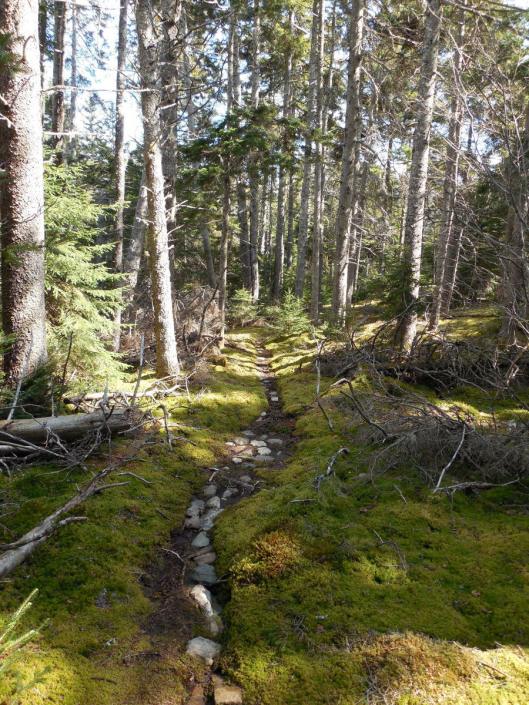
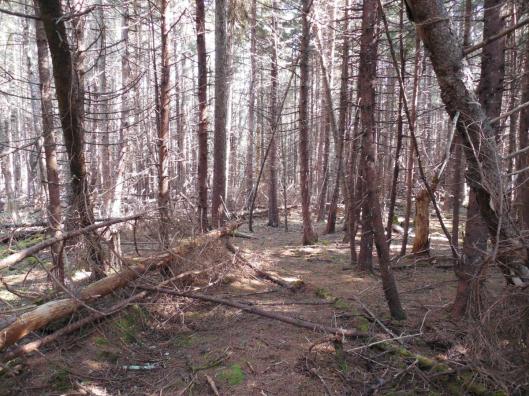
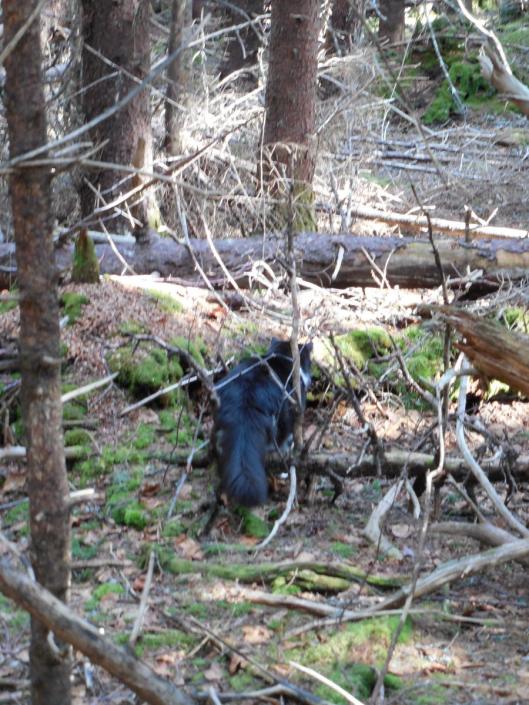
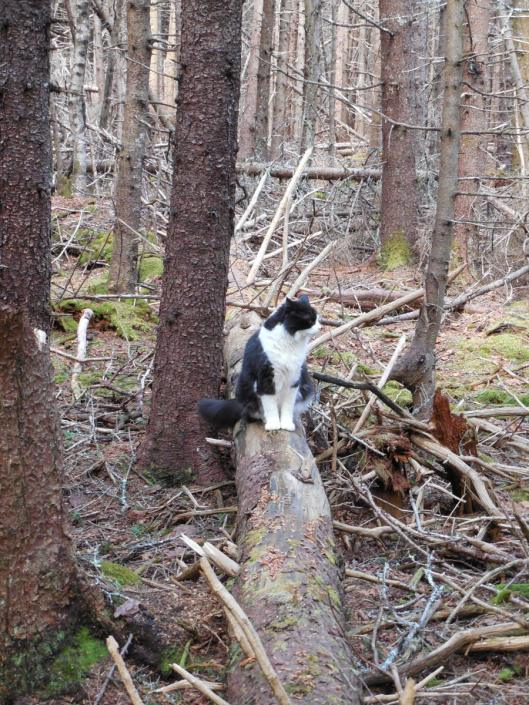
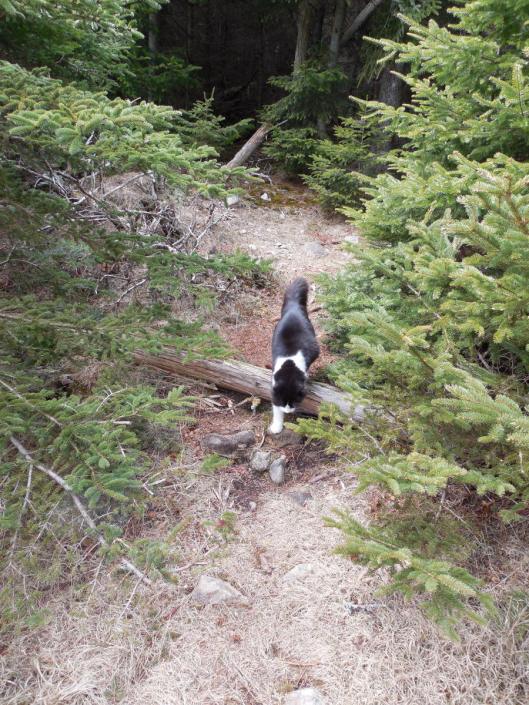
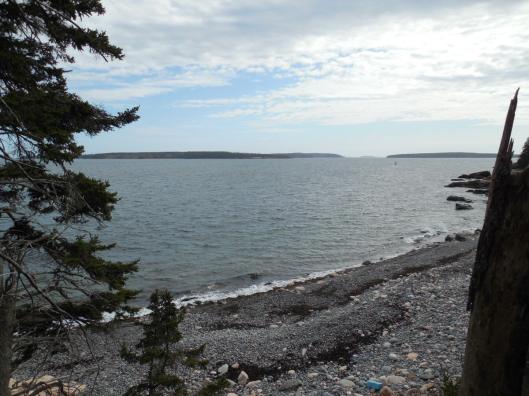
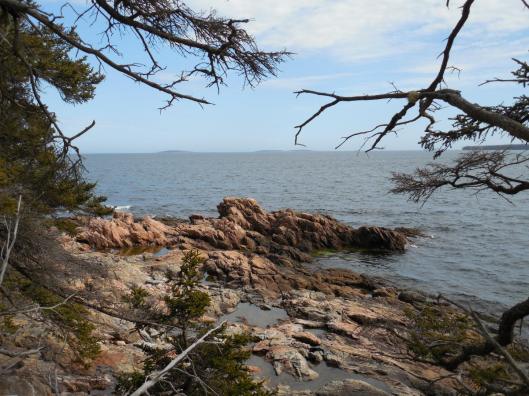
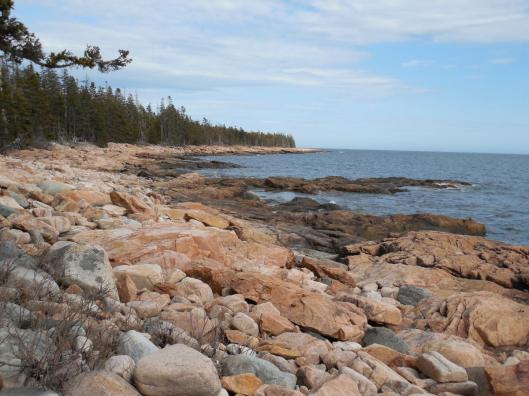
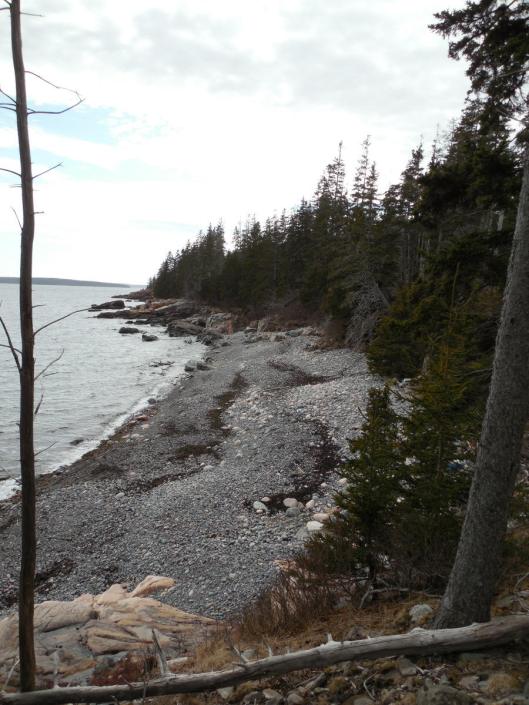
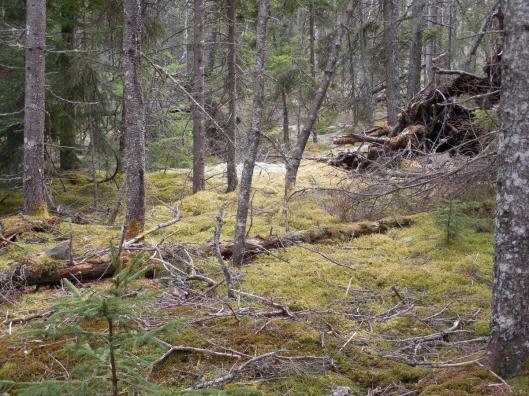
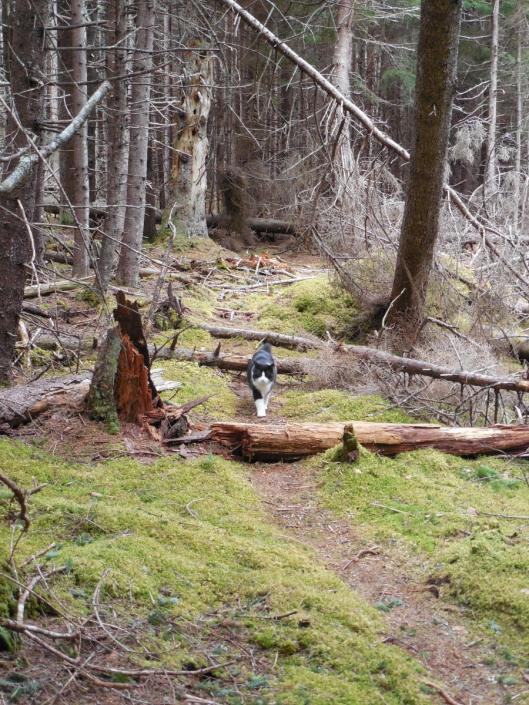
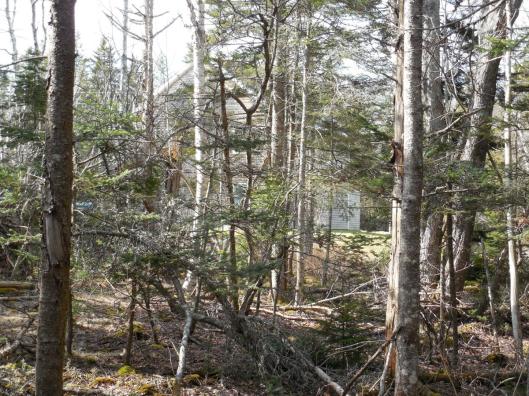
I believe that beach is along the old Bass Harbor Lighthouse Trail, which runs from the lighthouse to the mouth of Ship Harbor. Some locals years ago called the beach Whistlers Beach. That trail through the woods should come out above a cliff over looking the beach, from there you simply follow the path downward to access the beach.
Todd-Thank you, thank ;you! You/ve made my day. Have spent the last coupld of hours watching all your programs on BH ad Acadia, shedding a few tears as I go.
My husband and I were 30-yr visitors to Acadia, so I could easily follow you every step of the way. It was our “happy place”.
We originally stayed at the Atlantic Oceanside (Atlantic Oaks). Eventully moved over to the Bay View where we settled in for ten days of pampering and friendship. We covered the island inch byi inch, driving, and some hiking. We bought lunch at Hannaford, eating wherever the moof took us. We carried our chairs, or used nature’s own picnic spots.
We ate lobster many times in our ten day stays, and had a couple of favorite local restaurants. Introduced a number of family members to the island and took home lobster from Trenton Bridge to a hungry crowd waiting for the experience
We booked the next year’s stay the day we left for home, and began to look forward to our trip right after the first of the year!
We made a number of friends over time and keep in contact with many of them all year. It was, indeed, our “happy place”.
My husband passed away in February, 1997, and I haven’t been aack since, so I can’t tell you how pleased I was to come upon ;y;our programs. I’m able to follow along each of your trips and know where hyou are each step of the way.
Thank you so much for keeping my memories alive.
Best to you.
Noreen Dick
noreend122@gmail.com
Noreen I am very glad to bring a few memories back for you.